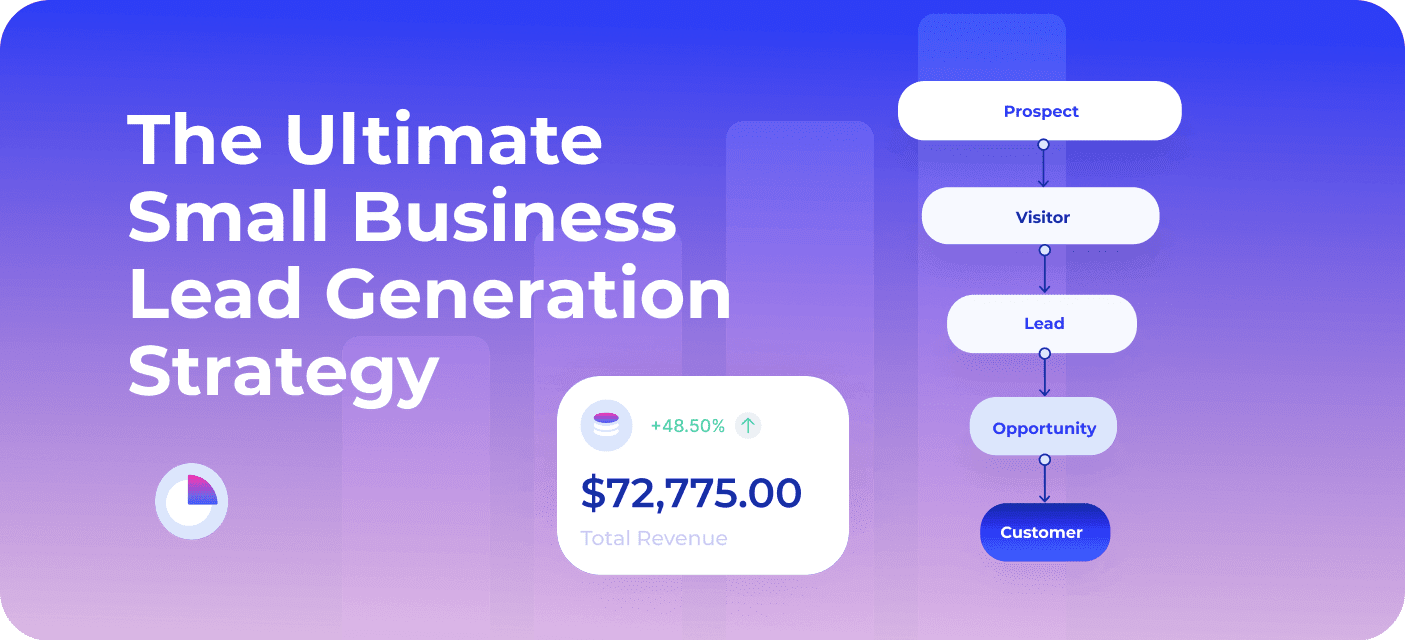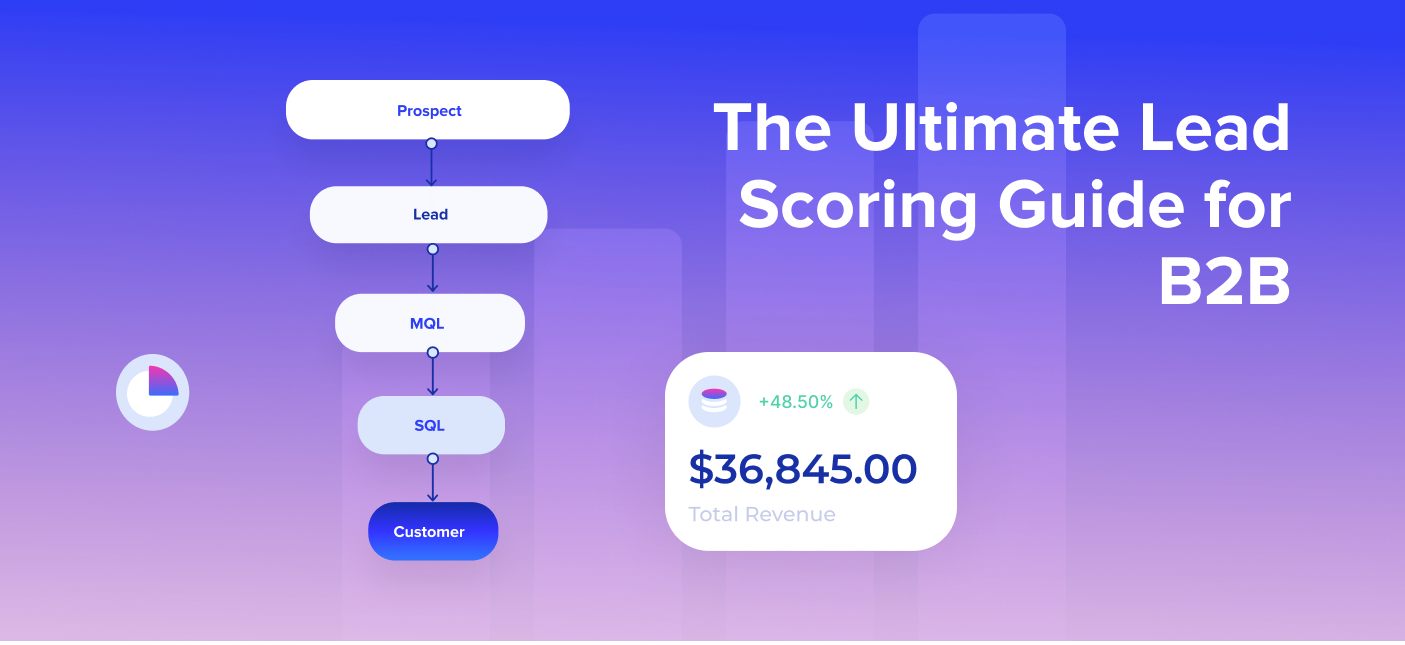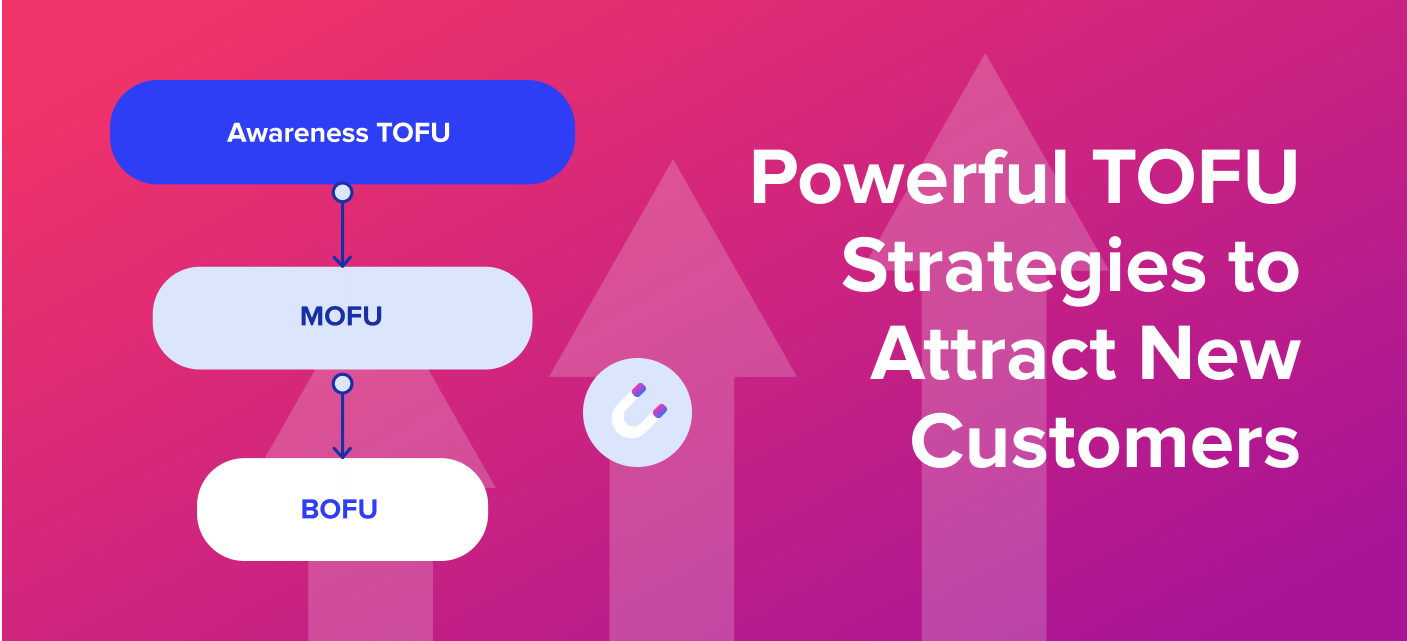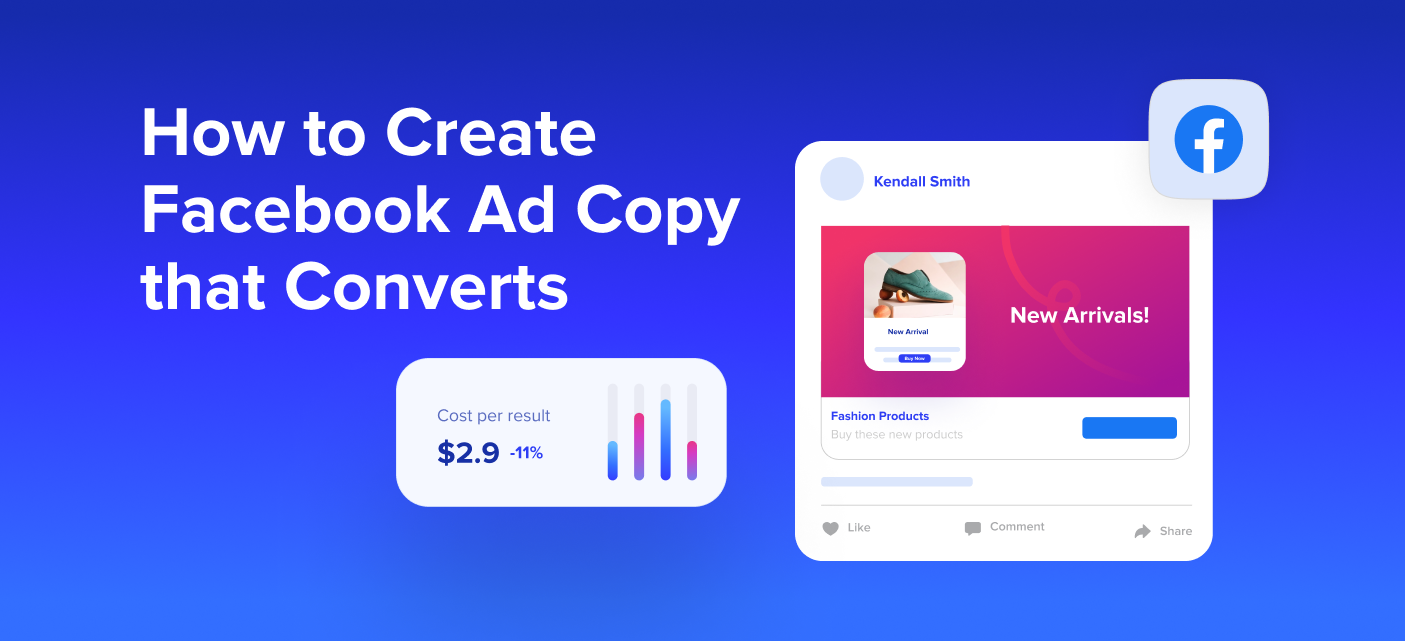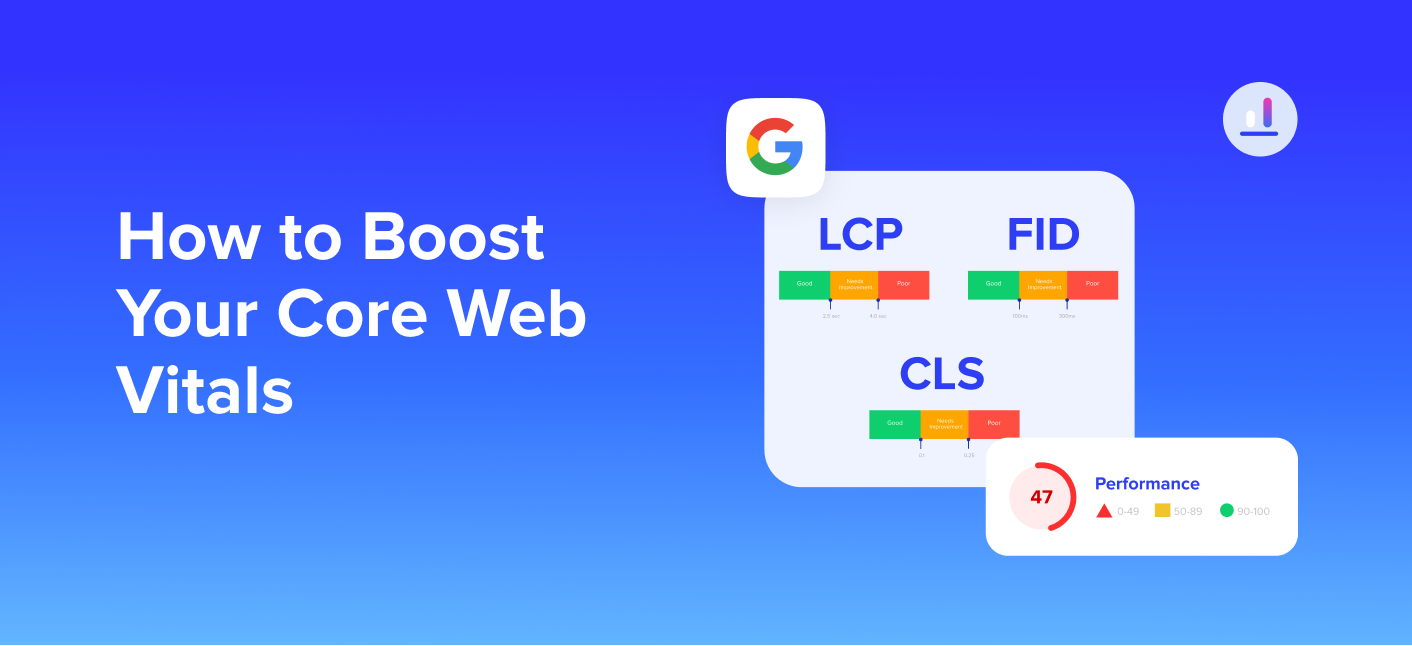Monitoring key performance indicators (KPIs) is essential to track and measure the success of your e-commerce store. KPIs help you understand if your online store is on the right track and meeting set goals.
E-commerce merchants are rich with data, each providing information at various levels. But with so much data, it may be difficult to distinguish real performance drivers for your business from vanity metrics.
To set you up for success, you need to select KPIs that will provide useful and actionable insights, so you can make adjustments to meet and exceed your goals.
In this guide, you’ll learn why you should bother to measure KPIs, what makes a good KPI, what KPIs you must measure for your online store, and how to improve every one of them.
Let’s get started…
Table of Contents
Why you need to measure e-commerce KPIs
E-commerce KPIs help you measure how effectively your online store is meeting its set goals. Key performance indicators break your business into its components and show how each component is performing.
With e-commerce KPIs, you can analyze the performance of core elements like marketing, sales, and customer service.
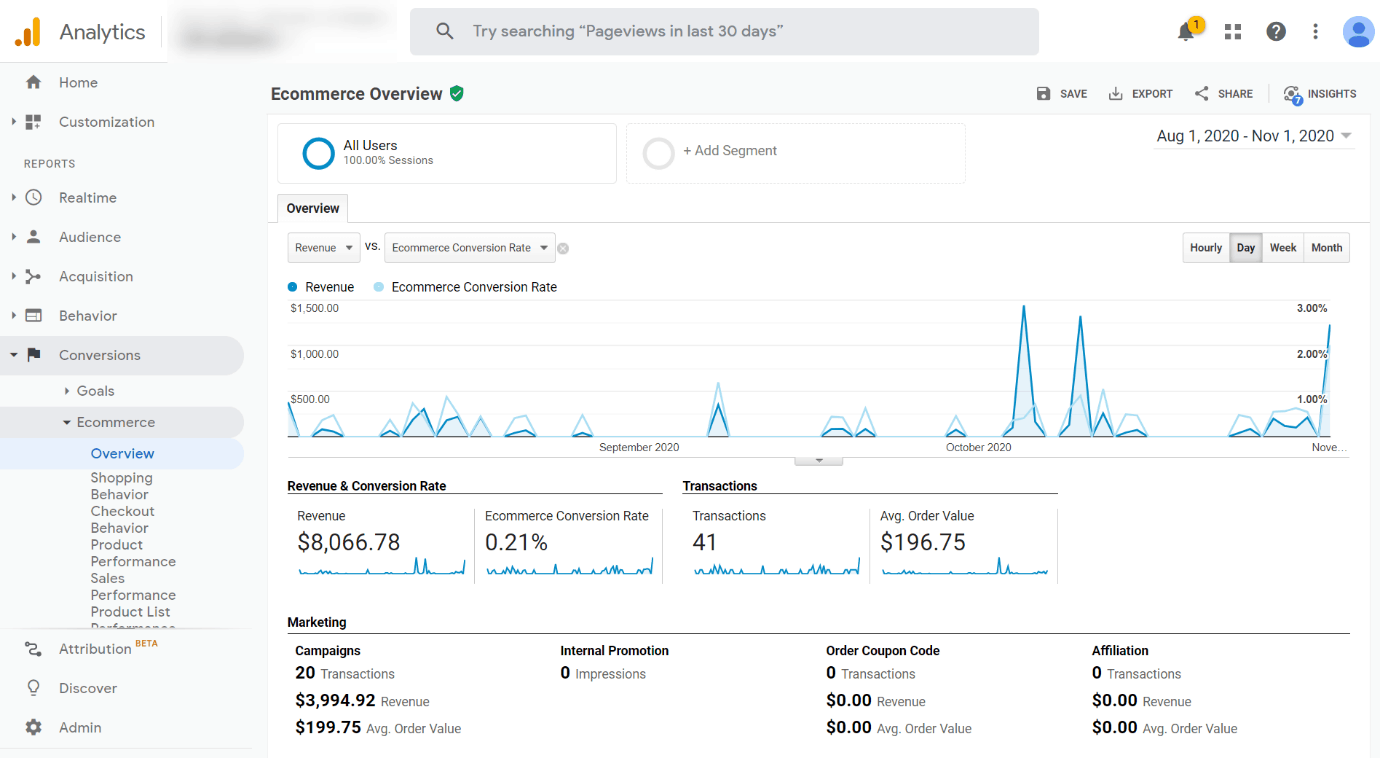

For one, KPIs can help you identify underperformers and serve as early warning signals.
There are a lot of things that can go wrong: targeting, customer service, traffic cost, conversion rate, etc. All of them can affect your revenue and profitability. With KPIs, you can follow the customer journey and pinpoint exactly what went wrong.
At the same time, you can use KPIs for further improvements.
If you have a successful store and want to scale your revenue and profits, you should check KPIs to discover new opportunities for optimization and growth.
Highlight the things that are going well and try to do more of what’s working. Also, find ways to improve on some less successful business components to cut costs or boost your success rate.
The most important part of analyzing KPIs is to take action based on your measurement. Use your KPIs not just to draw insights and conclusions, but also to come up with effective ways to improve your future performance.
For instance, KPIs may indicate that high customer acquisition costs are eating away your profits. In this case, you need to use KPIs to determine if this is caused by a low conversion rate or high traffic costs. To improve your performance you’d want to test and implement new optimization techniques and put effort into fixing the problem.
Finally, use KPIs as a benchmark.
Establish baseline metrics to benchmark not just against competitors but also against yourself. Compare your current against your past performance to determine your progress. This is the most effective way to drive constant business growth.
5 Critical Bounce Rate Benchmarks
Understand your bounce rate and find areas for improvement to get more website conversions. Get the free bounce rate report now!
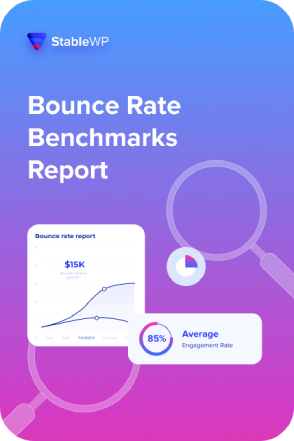

What makes a good e-commerce KPI
To ensure you’re tracking the right metrics you must select useful and informative KPIs that deliver clear insight into how your online store is performing. There are five main considerations that make up a good e-commerce KPI. Key performance indicators need to be:
- 1. Measurable
- 2. Impactful
- 3. Relevant
- 4. Actionable
- 5. Timely
Considering how many components every business has, the number of metrics is somewhat overwhelming.
You can find articles that suggest over 60 KPIs. Many businesses try to measure everything.
It is very time- and effort-consuming so they give up after some time. With this attitude, you can not even spend time on improvements because you sacrifice all your time to measurements.
To keep your KPI analysis efficient and informative, focus on metrics that have the following five criteria.
1. Good KPIs are measurable
One of the most important characteristics of a good e-commerce KPI is that it is easily and accurately calculated. The ability to clearly measure a KPI allows it to be comparable and eliminates any potential biases.
Yes, there are KPIs that are super difficult to measure and they are still very subjective in the end. To have a result that you can use for analysis, you must choose metrics that contain numbers.
2. Good KPIs have an impact on your bottom-line
E-commerce KPIs you select to monitor must relate to your goals and have a clear impact on your business bottom-line.
This means that indicators need to have a direct effect on how your business performs in terms of sales, revenue, profitability, cost, etc.
Such KPIs are true drivers of business success, so they’re of critical importance for your online store.
3. KPIs must be relevant to your business
Pay attention to KPIs that are relevant to your online store and align with your business goals. Every niche and business has its specificities.
For example, you will not include customer service metrics into measuring customer satisfaction if you do not have a customer service team. Also, a blog post on the best website ideas may help extend your reach and get some shares, but these metrics are hardly relevant if you’re selling auto repair tools in your online store.
4. KPIs must be actionable
For a KPI to be useful it needs to be actionable. E-commerce KPIs must help you understand what optimizations and improvements you need to make to improve your overall business performance.
A KPI isn’t effective if you don’t know what to do with that information.
A good KPI allows you to draw insights and make informed decisions on what action you need to take to get better results.
5. KPIs must be timely
Lastly, a good KPI is timely and can be measured in real-time to be useful. You must focus on indicators that can be accessed in real-time so you can analyze, make decisions, and implement optimizations on a regular basis without delays.
Old data can only be useful when combined with real-time insights to track and discover trends and anomalies in performance.
5 KPIs to monitor for a high converting e-commerce store
In this section, we’ll go over five crucial e-commerce KPIs that can help you monitor the success of your online store and continually improve results.
Even though niches and businesses are unique, 5 metrics are essential to all online stores.
Monitoring these KPIs will help you identify progress toward sales, marketing, and customer service goals.
Let’s go over these 5 metrics and we’ll provide instant solutions, in case you need to improve them.
1) Customer Acquisition Cost
Customer Acquisition Cost (CAC) is an e-commerce KPI that tells you how much it costs to acquire (buy) a paying customer. It considers all the money you invest in marketing and sales and divides it by the total number of customers acquired.
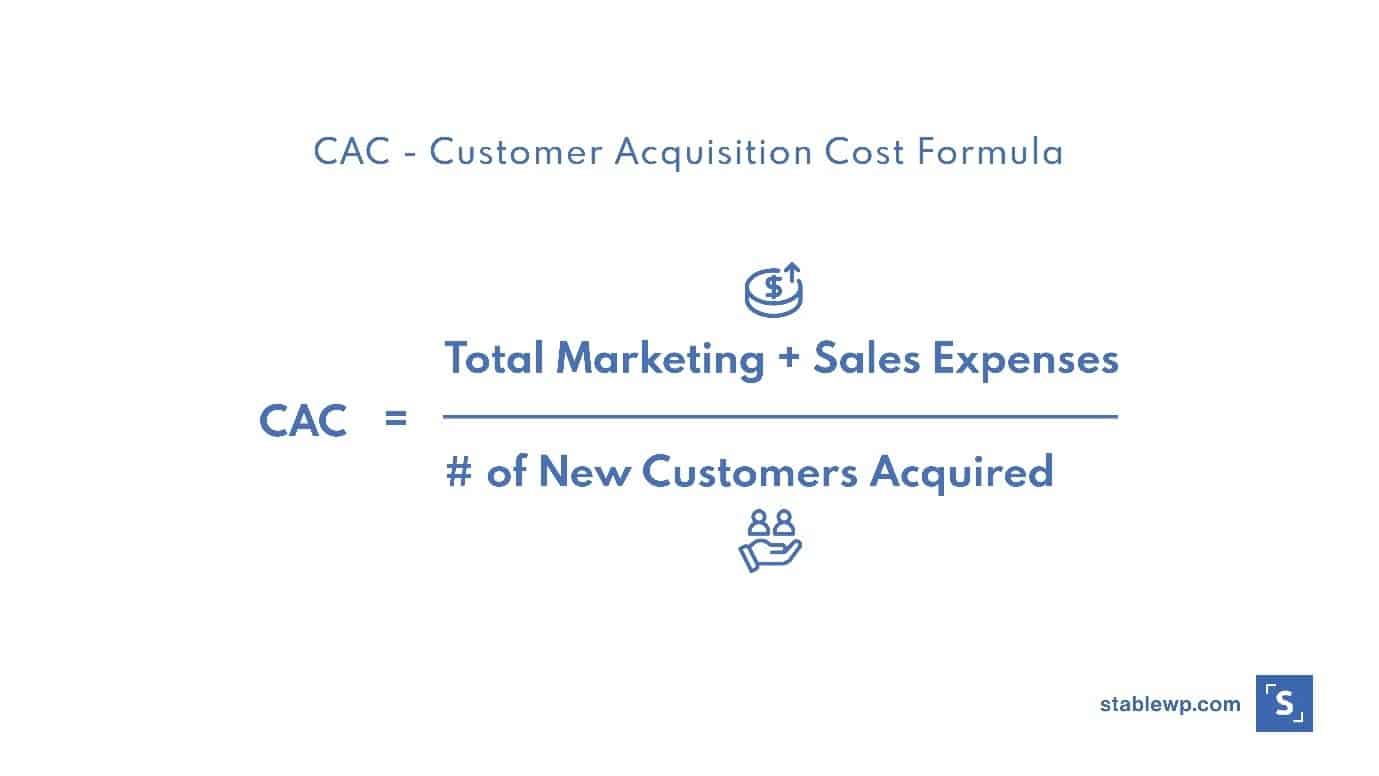

Let’s go through an example, if you invest $5000 in marketing and sales and you close 100 new customers, that means your CAC is $50. So, it takes $50 on average to acquire a customer.
You must invest money/effort into attracting new customers.
To stay profitable, your CAC needs to be lower than the average order value (which we’ll cover later). Your profit will be the difference between the CAC and AOV.
That’s why knowing your CAC is critical. It can make or break your e-commerce business.
If your costs of customer acquisition are too high, you may end up spending more on attracting customers than you can earn, so you’ll operate at a loss.
Sometimes digital marketing efforts do not require a direct monetary investment. For example, you don’t have to pay directly for organic traffic coming from search engine optimization, guest posts, or having an account on social media.
Yet, gained or owned channels may not be enough since it takes a while before you can count on them to drive consistent sales. Advertisements on Google, Facebook, Instagram and even Pinterest can attract prospective shoppers almost instantaneously, but they do cost money.
So how do you reduce costs of customer acquisition?
Analyze your best performing campaigns
Some ads perform well and some do not generate new customers at all.
Determine how much each campaign contributes to customer acquisition. Scale campaigns that generate customers at a profitable CAC. Eliminate those that drain your budget without driving results.
Choose the right marketing channel
The success of your campaigns also largely depends on which channel you use. Analyze where the visitors are coming from: is it Google ads, organic traffic, social media.
Choose the best performing channels and do not be afraid to cut off the channels that attract new customers at an unprofitable CAC.
For example, you may have paid tons of money to a worldwide influencer but got only 10 new customers, while the same budget for Google Ads got you more than 100. Cut off the influencer and allocate that budget to Google Ads.
Run retargeting and remarketing campaigns
Retargeting is often considered to be a highly effective strategy that delivers the highest ROI.
This is important since 98% of shoppers won’t buy on their first visit. And letting them go means you’re leaving a lot of money on the table.
With retargeting, you focus on re-engaging visitors that already came to your online store but haven’t purchased yet. This tactic allows you to reach potential customers who are warm and close to making a buying decision.
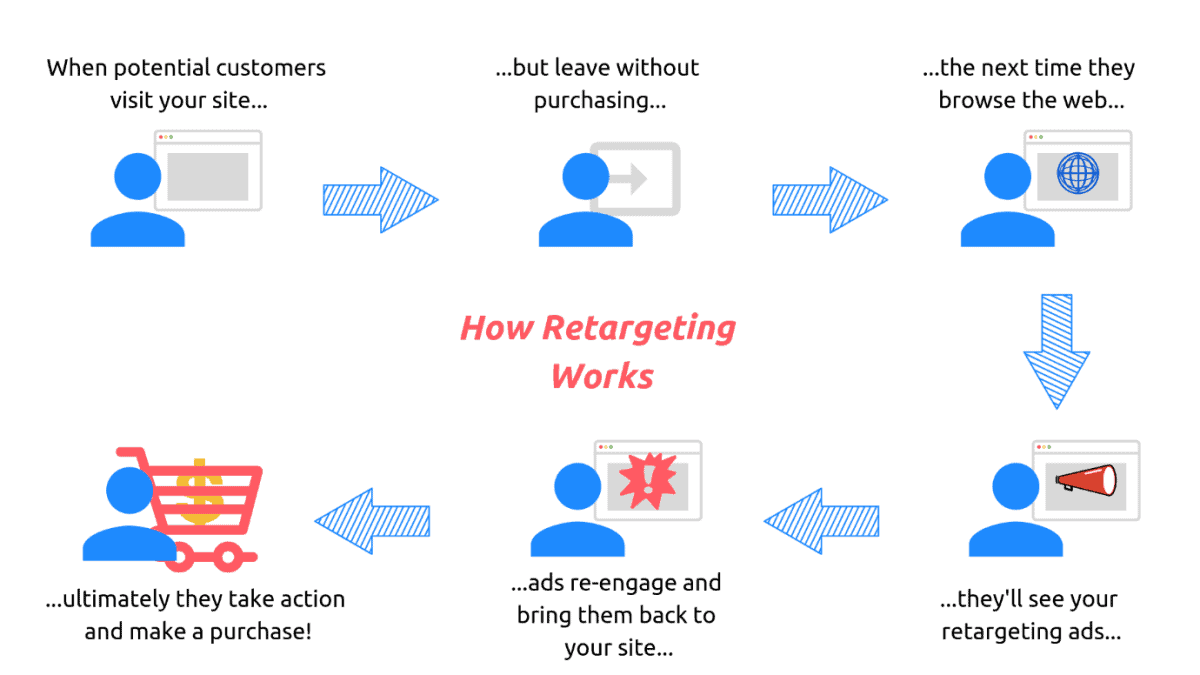

Using special offers, discounts, and other valuable incentives, you can give them the nudge they need towards a purchase. These advanced retargeting tactics help you increase the number of new customers at a lower cost and lower CAC.
2) Conversion Rate
Your e-commerce conversion rate is the next KPI you should closely monitor. The conversion rate tells you how effective your online store is at generating sales (conversions).
The e-commerce conversion rate is the percentage of visitors that come to your online store and make a purchase.
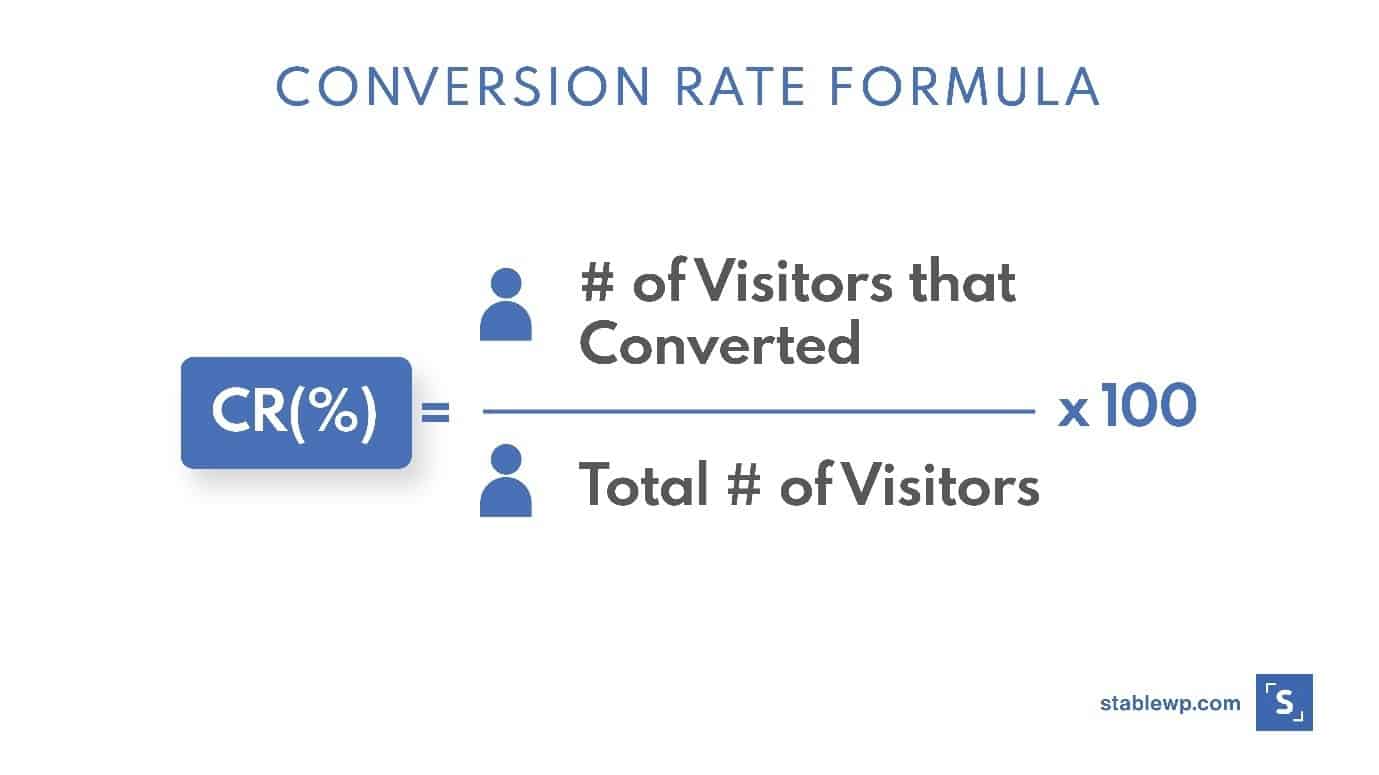

The conversion rate will help you identify how effective your e-commerce design, messaging, imagery, and other elements are at encouraging shoppers to take action and buy.
Low conversion rates are usually the consequence of a subpar user experience. The conversion rate will indicate that there are problems with your online store. Perhaps the copy isn’t persuasive enough, or the images are not convincing. It could also be the lack of social proof, difficulties checking out, etc.
So yes, marketing is not enough. You have to put a lot of effort into your website design, what messages it conveys, how easy it is to purchase, etc.
A typical e-commerce conversion rate is between 2-3%. This means that out of every 100 shoppers, only 2 to 3 will buy.
However, even small improvements in the conversion rate can have a huge impact.
If you have, for example, 10,000 visitors and your conversion rate is 3% and your average order value is $100, then you’re generating $30,000 in revenue.
If you can increase your conversion rate by just 0.5%, your revenue increases by $5000.
Some effective ways to boost your e-commerce conversion rates are:
Add social proof
Testimonials and reviews on product pages are a way to build trust with potential customers. Shoppers that see others satisfied with your product will be more confident buying it.


Make buying easy
Sometimes shopping online can be annoying because it’s not easy to find or use the menu, categories, filters, prices, etc. If potential customers have difficulties navigating your site intuitively, they may become frustrated and leave without buying.
By making shopping simple, you’ll be able to eliminate obstacles that prevent visitors from buying, thus increasing your e-commerce conversion rate.
Use scarcity and urgency
Fear of missing out (FOMO) can be a powerful driver of action that can increase your e-commerce conversion rate.
Using scarcity and urgency can persuade shoppers to buy now or miss out.
A good way to leverage scarcity and urgency is with countdown timers.


Provide a limited offer that is available only in the next 10, 24, or 48 hours and show a clock that counts down how much time they have left.
Using scarcity and urgency can help more people act faster, without second-guessing their decision which leads to a higher conversion rate.
3) Average Order Value
Average order value is the next big e-commerce KPI you must track. Average order value (AOV) is the average amount of money each customer spends when they purchase from your online store.
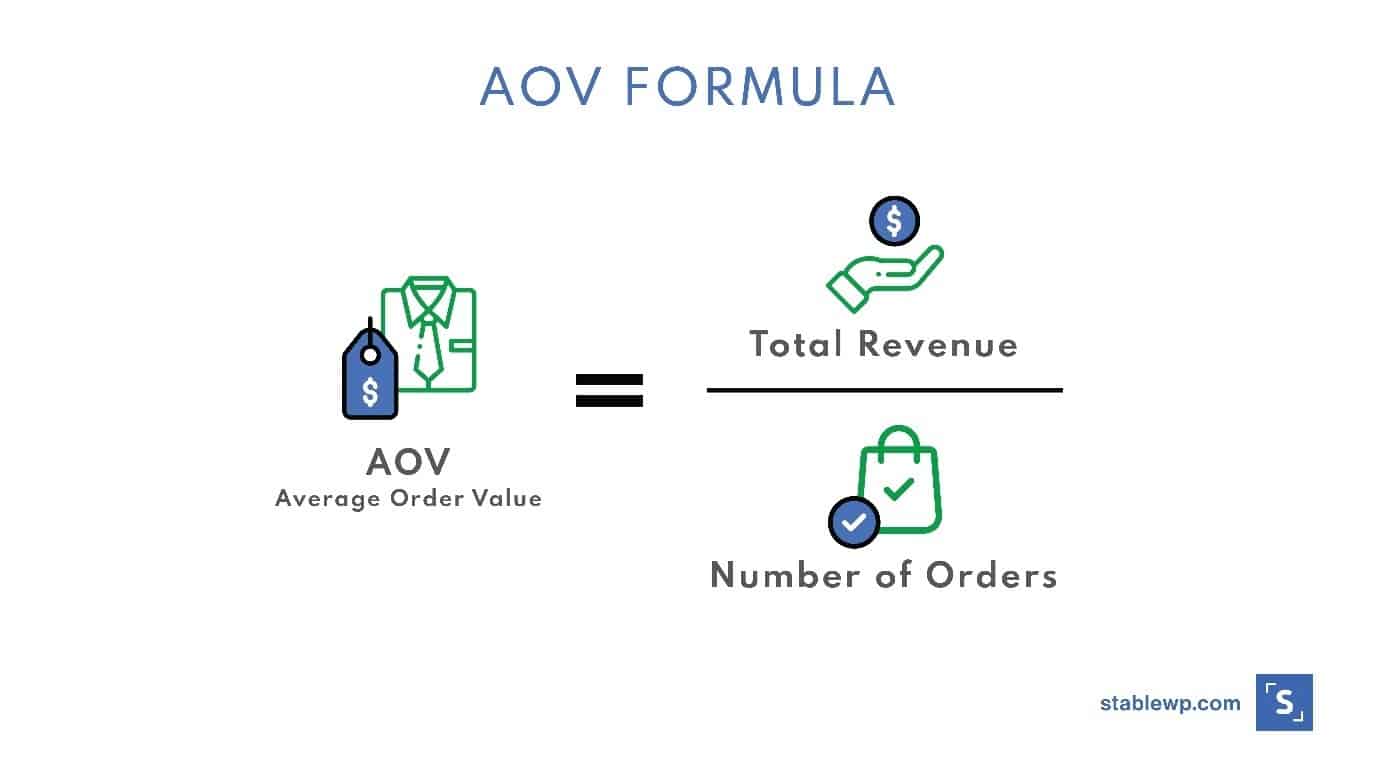

Knowing your AOV is critical to understanding who your best customers are, how to set up campaign targeting, and is also a decisive factor that helps position your pricing, shipping, and other key strategies.
Let’s imagine that you spent $40 to attract a single customer. If they buy shoes from you that cost $250, you are fine.
But what if they buy shoelaces only? The price you have paid to attract them is completely unreasonable.
Increasing your average order value directly impacts your revenue growth and leads to more profitable sales.
Therefore, you need to keep track of the average order value to know if you’re getting a profitable return on investment.
Acquiring new customers takes money, time, and effort. However, increasing your AOV is much more cost-effective.
Making one customer spend more can lead to more profitable sales since it doesn’t require any extra cost.
If your average order value is depressingly small, try these two techniques:
Cross-selling
Cross-selling works by offering complementary products to the main order. You can offer similar products, accessories, add-ons, etc.
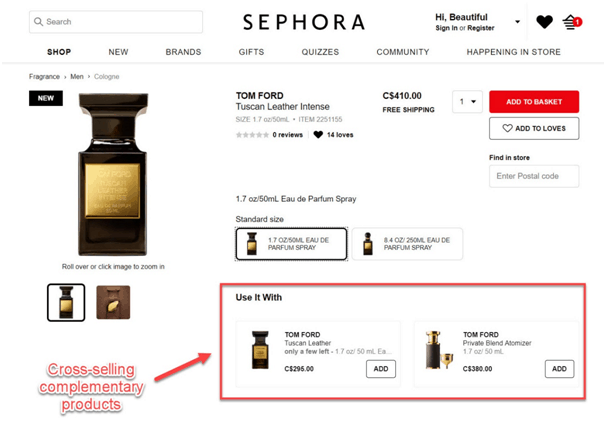

Cross-sells will effectively increase the size of each sale and help you generate a higher profit since your CAC is divided by a higher AOV.
Upselling
Upselling is the tactic where you try to increase the order value by offering a higher-tier product at a more expensive price. Your goal is to encourage shoppers to buy a better, or deluxe version of a given item.
Once the user is set on buying a product from your online store, offering an improved version seems like a better deal.
4) Shopping Cart Abandonment Rate
Following further the customer journey, we end up in the shopping cart. Cart abandonment rate can help you analyze the performance of your checkout experience. Essentially, it helps you identify any potential weak spots or steps in the checkout flow where shoppers get stuck and abandon their cart.
The goal is to keep your overall cart abandonment rate as low as possible.
Many users add items to the shopping cart but never process payment. There are several reasons for such behavior:
- Some visitors were never meant to be customers; they were just “window-shopping”
- Customers could not find how to pay, or the process was too complicated
- Shoppers encountered surprise costs at checkout (i.e. shipping costs)
- Customers did not find the payment process safe
To measure shopping cart abandonment rate, use this formula:
| Cart Abandonment Rate = 1- | # of Transactions Completed | x 100 |
| # of Carts Added |
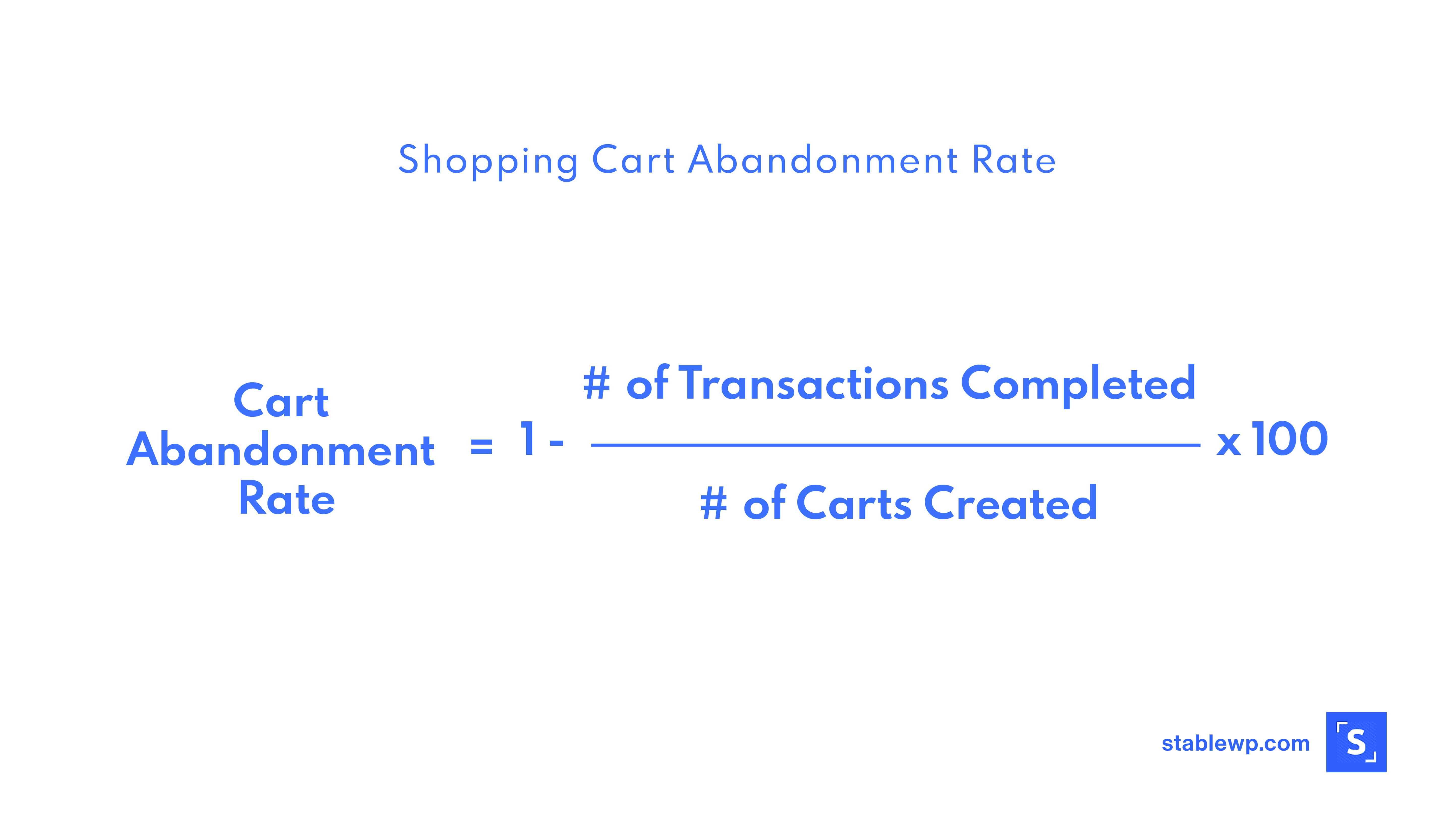

You can analyze the Checkout Behavior report in Google Analytics to identify steps with high drop-offs.
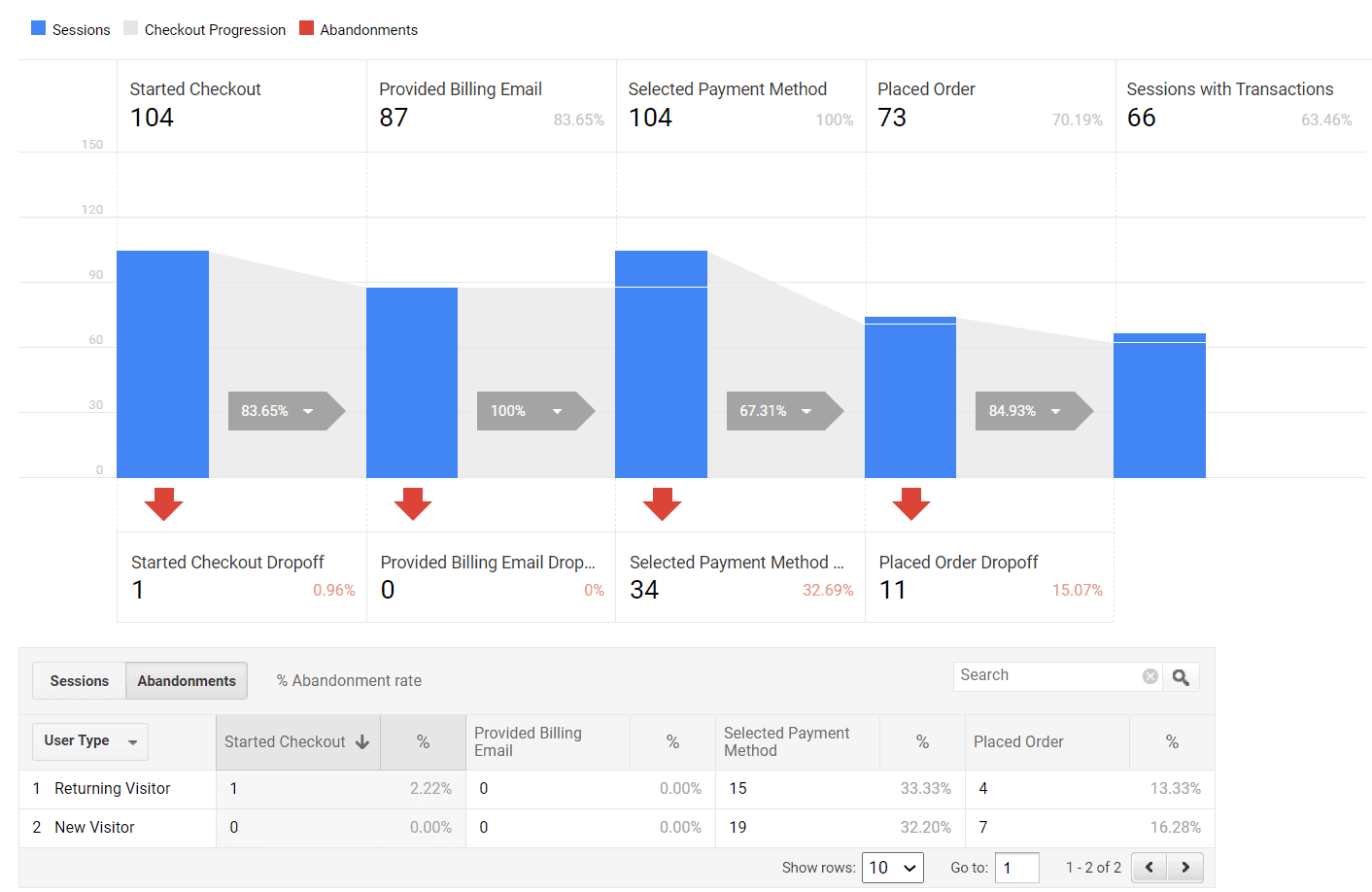

The average e-commerce cart abandonment rate is nearly 70%.
If you can decrease shopping cart abandonment, you will have a quick increase in revenue.
The best way to keep your cart abandonment rate low is to streamline your checkout flow.
Here are some tactics to help you optimize your checkout and decrease the abandonment rate:
Provide different payment options
Customers have various preferences when it comes to payment options, so the more you offer, the better.
Give your shoppers the convenience to select from a large variety of payment methods – credit and debit cards, and perhaps even digital wallets like PayPal or Apple Pay.
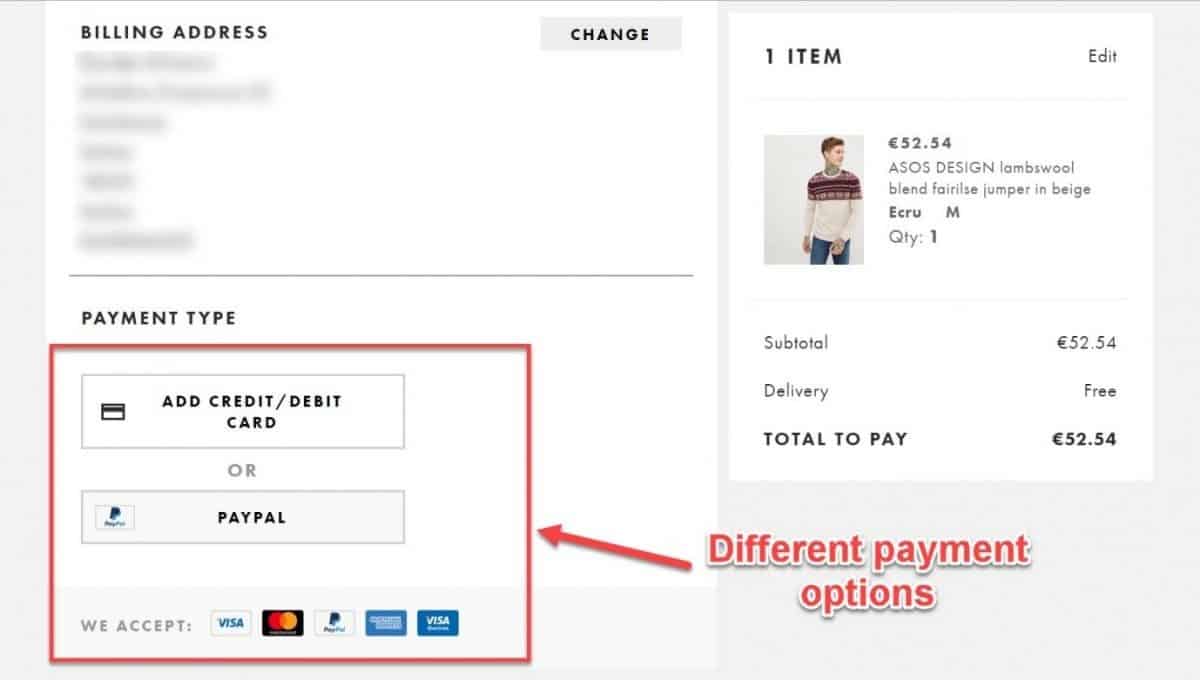

Choose the payment processor that allows you to accept all payment methods potential customers may want to use.
Have a progress indicator
Use a checkout progress indicator to help shoppers visualize how many steps it takes to complete the order. It can help reduce cart abandonment by reassuring the process won’t be lengthy or complicated.
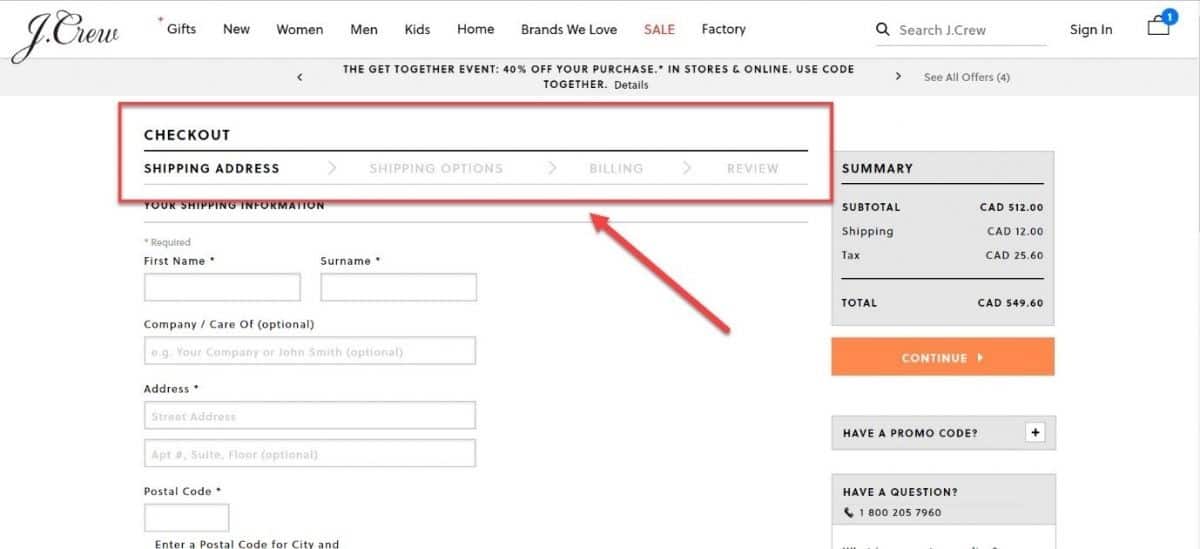

So, if you have a progress indicator, a customer will know exactly what to expect and how many checkout steps are left.
Remind shoppers about what they are paying for
Customers want control and clarity. So, be sure to clearly display what’s in the cart and how much they have to pay for it. Surprise costs are the top reason for cart abandonment.
Be sure all the pricing and cost information is obvious and easy to understand.
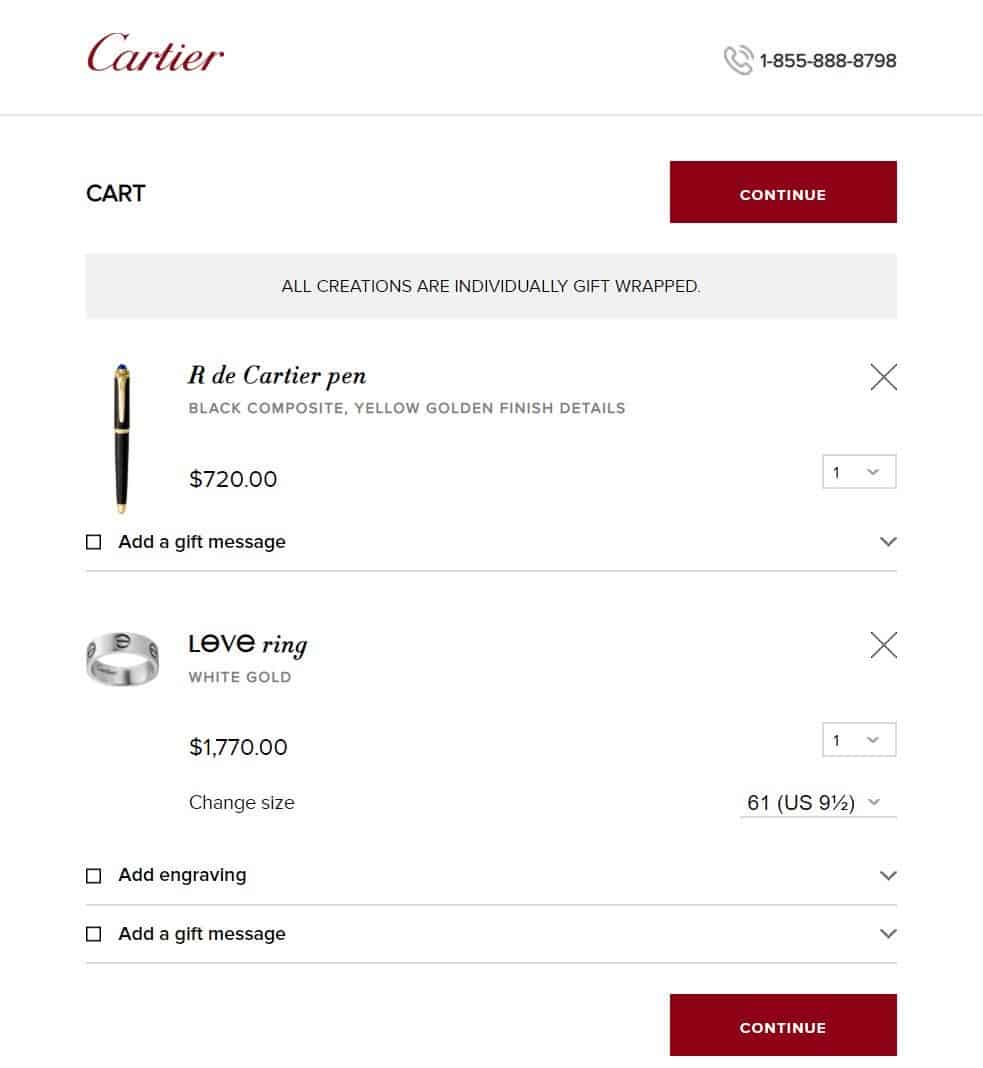

Also, be sure to give the shoppers the control to remove, modify or add more items to their cart.
This can come a long way when trying to reduce your cart abandonment rate.
5) Customer Retention Rate
The customer retention rate (CRR) informs you how successful you are at keeping existing customers. CRR is the percentage of customers who return to your online store and buy again in a specific time window.
The CRR is a good measure of how loyal your customers are.
Customer loyalty is essential for any e-commerce business since returning customers are much more profitable.
As we already know, it is too costly to attract new customers but much less effort and money are needed to re-engage your existing customers. They already know you and it’s much less expensive to encourage them to return and buy from your store again.
Use this formula to calculate your customer retention rate and find out whether your customers like you enough to come back:
| CRR = | # of Customers at the End of the Period – # of New Customers | x 100 |
| # of Customers at the Start of the Period |


Customer retention rate can also be used to calculate the customer lifetime value (CLV).
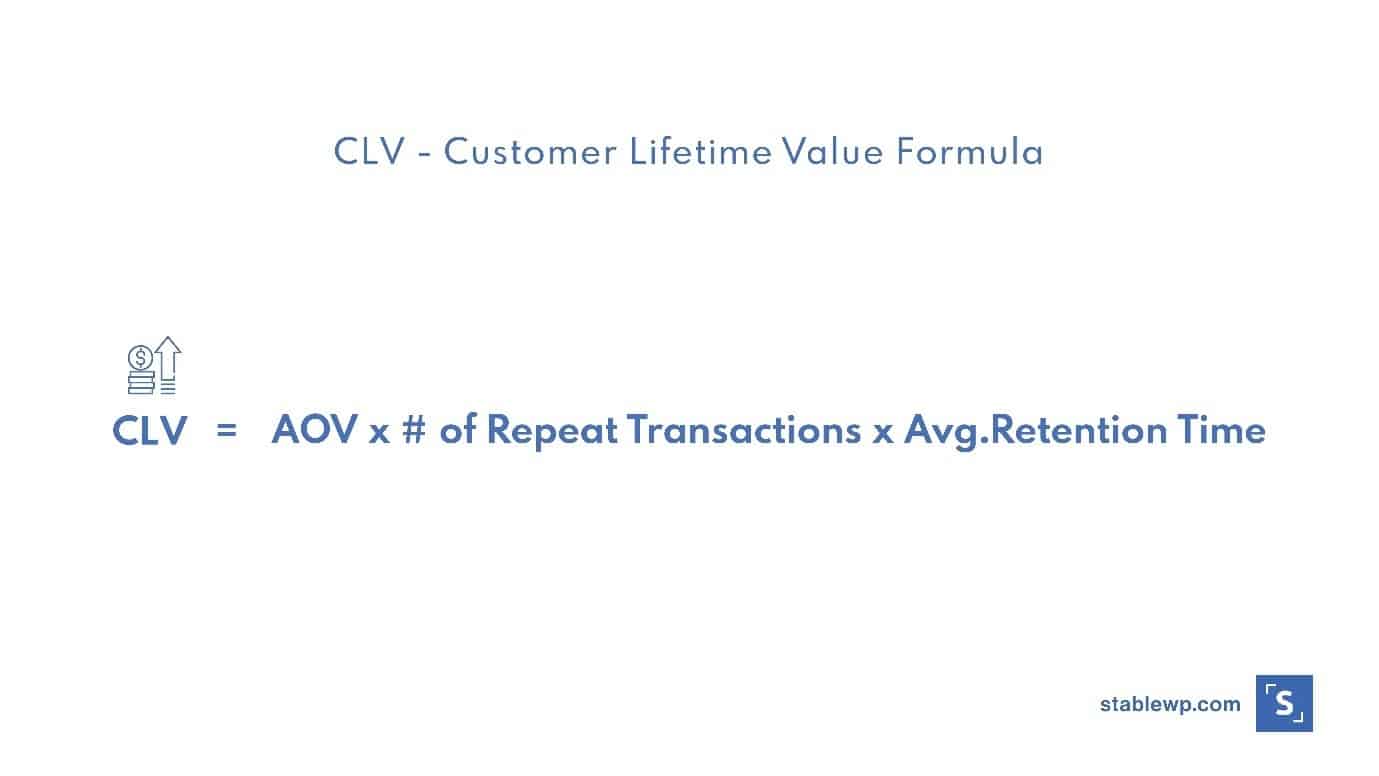

To re-engage existing customers and improve your CRR, try the following tactics:
Establish a loyalty program
To increase customer retention use loyalty programs and boost purchasing frequency with reward points.


With a loyalty program, you give incentives to existing customers to shop from your store again and again.
Customers usually feel validated and valued if they are given exclusive offers, so they give you back more.
Send follow-up emails
Use email remarketing to promote new arrivals or special offers for most loyal customers. This is a proven tactic to improve your CRR and CLV.
Be sure to create an email remarketing list to target existing customers with targeted offers.
Survey existing customers
With surveys, you show existing customers that you value their opinion and care about their satisfaction.
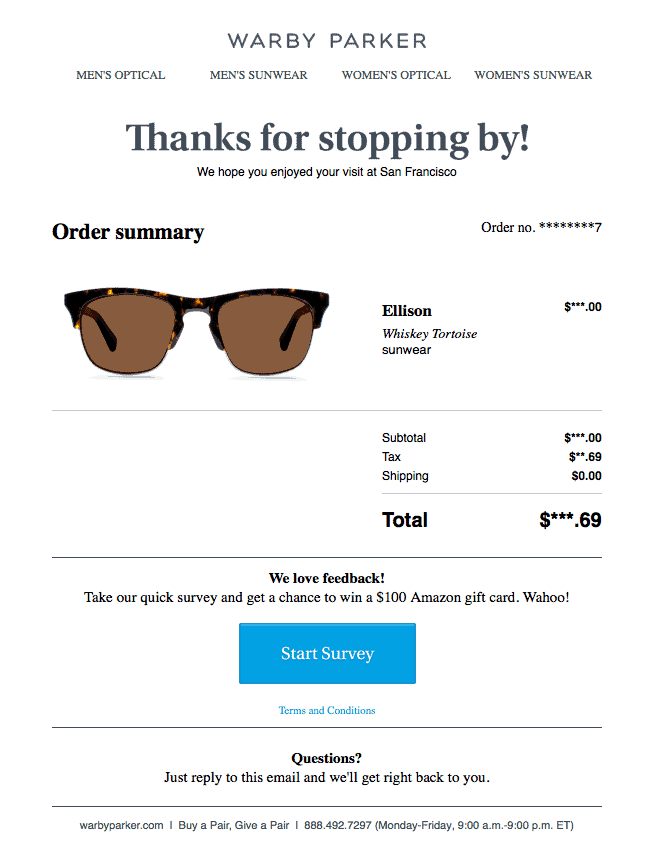

If you show customers that you appreciate their opinion on your product, they will feel that you care about them overall. You will become not just another online shop but a preferred brand in your customers’ eyes.
Conclusion
KPIs are essential for your steady growth and improvement. It is hard to find relevant KPIs among hundreds of them but selecting indicators that are relevant, measurable, impactful, actionable and timely will help you get the best results.
There are 5 KPIs though that every e-commerce store should track.
They follow the customer journey and indicate how much every customer costs you, how many visitors convert into customers, how much they pay on average, how many abandon their cart, and how many customers come return for repeat purchases.
Remember to never monitor KPIs in isolation. Cross-reference KPIs to identify issues and measure results more accurately.
If you need help setting up analytics for your site or improving your performance, be sure to contact us for a personalized strategy session.
And if you have any questions or comments, drop us a line down below.


